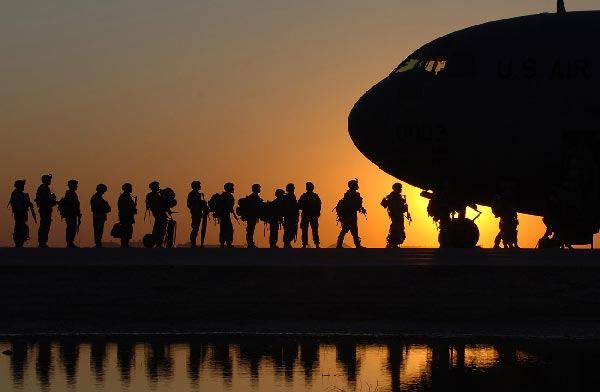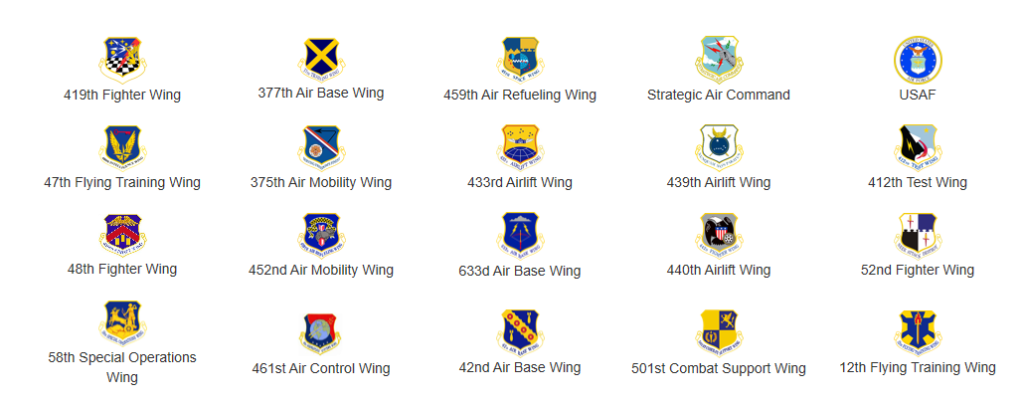
The structure of the United States Air Force ensures it’s able to equip, manage, and execute its military capabilities effectively. The U.S. Air Force includes more than 300,000 active service airmen, making it one of the most prominent military organizations.
The Air Force is made up of units, non-units, and establishments. An establishment consists of a headquarters and its subordinate units. This helps create a chain of command, which encourages a free flow of accountability and leadership.
There is no specific figure of personnel allocated to any of the military elements. Furthermore, the magnitude of the command depends on the mission and type of the unit. That being said, these are some of the basic structures within the U.S. Air Force:
Headquarters United States Air Force (HQ USAF)
HQ USAF is the senior Air Force headquarters. It consists of air staff commanded by the Chief of Staff and the Secretariat. The Secretariat is made up of the Secretary of the Air Force and the Secretary’s principal staff.
Major Commands (MAJCOM)

MAJCOMs are organized based on special operations, combat, material support required for services and mobility. For instance, wings with the principal mission of training are allocated to the Air Force Education and Training Command (AETC). The MAJCOMs report directly to the Air Force headquarters. Moreover, through MAJCOMs, the Air Force can train, equip, and organize its forces. Combat commands are provided to employ the troops they are provided with.
Numbered Air Force (NAF)

NAFs, like
the 7th Air Force, for instance, is a command level under the MAJCOMs. They
help to provide operational leadership and supervision. The NAF is used during
wartime and is assigned based on geographical responsibilities. These groups
include headquarter staff responsible for maintaining and preparing wartime
plans. The main objectives of the NAF are to ensure deployment preparedness and
employment of the assigned forces.
The assigned responsibilities of the NAF are staff, judge, advocate, evaluation
and standardization, inspector general, and safety.
Wing

Wings
are the level of command directly under the NAF. A wing has a special mission,
and is composed of an essential support group and a main mission group (more
about groups below). Two or more groups form a wing. In an Air Force base,
there is only one wing, and the wing commander is the installation commander.
The wing commander usually holds the rank of 0-7 or Brigadier General.
Objective wings clarify the lines of command as well as consolidate and
streamline responsibilities. They can offer support to a MAJCOM and have an
operational missions such as flight training and air combat. For broader
capability, wings bring together various squadrons or lower-level units (more
about this below).
Group

This is a level of command between squadrons and wings. It’s a tactical level that has two or more subordinate units. The dependent group may be a maintenance, medical, or provide a parent wing with specified capability.
Squadrons

Squadrons are building blocks and basic units in the U.S. Air Force providing specific support or operational capability. For example, a squadron may be a mission or functional unit such as security forces or operational flying squadron. The size of the squad depends on the composition of the specific units, and are identified by function in numerical order, like the 39th Security Forces Squadron.
Unit

A directive from the HQ USAF constitutes a military unit, which can either be a named flight, or numbered squadron organization.
All military force personnel belongs to a unit, providing an unbroken chain of command. A designated officer may command a unit including military members. However, in approved scenarios, a civilian may lead and supervise military and civilian personnel in a unit.

You can learn more about Air Force organization & find individual units here.
Click here to learn how the US Army is organized.

 How the United States Army is Organized
How the United States Army is Organized